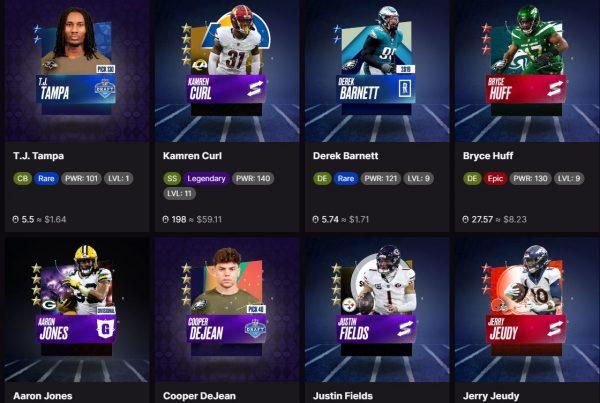
Margin trading allows users to access leverage and trade with larger positions while committing a smaller amount of capital. This is achieved through borrowing funds. For example, if you supply 1,000 USDT as collateral to borrow 2,000 USDT, you can enter a trading position that’s worth 3,000 USDT. This would be an example of 3:1 leverage (some people prefer to say 3x).
Through margin trading, traders can achieve outsized returns if they predict the direction of the market correctly. For example, let’s say that we went long on Bitcoin in the example above. If the price of Bitcoin were to increase after we opened the trade, we’d be making the same absolute profits (setting aside fees and interest) as if we had invested 3,000 USDT, even though we only put up 1,000 USDT of our own funds as collateral.
However, the risk of losses is amplified in the same way. If the price of Bitcoin were to drop, our losses in absolute terms (setting aside fees and interest) would be the same as if we had invested 3,000 USDT. In the worst case scenario, we would lose the entire 1,000 USDT that we put up as collateral.
While simple spot trading or even just passively buying and holding will do for most cryptocurrency investors, many people want to pursue more active trading strategies where the ability to access leverage can come in very handy.
Binance is offering much lower interest rates for margin traders
The Binance cryptocurrency exchange is addressing this demand with a feature-packed margin trading product which offers a large selection of coins, a lot of flexibility when it comes to leverage, and support for different margin types (Cross Margin and Isolated Margin).
At the time of writing, Binance is offering significantly reduced interest rates for users that are borrowing funds for the purposes of margin trading. Currently, the reduced interest rates apply for users who are borrowing Bitcoin (BTC), Ethereum (ETH), Binance USD (BUSD) and Tether USD (USDT).
For regular users, the annualized interest rate for borrowing BTC and ETH has been slashed from 7.3% to 3.65%, while the interest rates for borrowing BUSD and USDT have been cut from 14.6% to 7.3%. Users with VIP-level accounts can access even lower interest rates.
How to protect your assets when trading on margin?
The reduced interest trades make margin trading on Binance a much more attractive proposition, but it’s important to keep in mind that it still carries significant risks. In this article, we’ll be taking a look at five ways you can help protect your assets while trading on margin.
1. Choose a well-established exchange
The popularity of leveraged trading has resulted in a large number of cryptocurrency exchanges offering the service—some platforms have even been launched that only specialize in highly leveraged trading, and don’t even offer spot trading services. And while there’s certainly a lot of quality exchanges that are still looking to establish themselves in the market, there’s also many platforms that suffer from low liquidity, poor customer service, and lax security practices.
Unless you have very specific needs, it’s better to choose a more established cryptocurrency exchange if you’re looking for margin trading services. They likely have much stronger security measures, and are more likely to have sufficient capital to compensate affected users in the event of a security breach. Liquidity is also important—trading on illiquid exchanges can result in slow trades and unpredictable prices.
Binance has been operating since 2017, and is the most liquid cryptocurrency trading platform in the world. They also have the Secure Asset Fund for Users (SAFU), which has been established to protect user funds in emergency situations.
2. Understand the difference between Isolated Margin and Cross Margin
You can access two margin trading modes when you’re margin trading on Binance – Isolated Margin and Cross Margin.
In Isolated Margin mode, the risk is contained to each trading pair you’re using. In other words, if you have a long position open on the BTC/USDT trading pair that’s going poorly and is close to liquidation, you have to either close the trade at a loss or provide more margin manually. In the event of liquidation, you will only lose the margin that you committed to the position—the rest of your positions will be unaffected. On Binance, regular users can have up to 10 Isolated Margin trading pairs active simultaneously.
In Cross Margin mode, your entire margin account balance is shared among all the positions you have open. Funds from one position can be moved to another position to avoid liquidation. This can be useful, but can also result in your entire margin account being liquidated. When using Cross Margin, you can use many different crypto assets as collateral.
3. Monitor your Margin Level
When margin trading cryptocurrency on Binance Margin, you have to pay very close attention to your Margin Level. The Margin Level tells you the risk level of your Margin Account, more specifically the ratio between your Account Equity and your Total Debt. The higher your margin level, the better.
If you’re using Isolated Margin, you will have a separate Margin Level for each trading pair. If you’re using Cross Margin, you will have one Margin Level for your entire margin account.
As a rule of thumb, the best scenario is when your Margin Level is above 2—this will give you access to full functionality, and you will be able to trade and borrow, as well as transfer assets out of your margin account to your other accounts on Binance.
However, depending on the margin mode you are using and the amount of leverage, there will be different key Margin Level values to watch out for. For example, if you’re using Cross Margin and 3x leverage, you will get a margin call if your margin level drops to 1.3 or below. If it drops to 1.1, your Cross Margin account will be liquidated to repay your debt.
Before you start trading, make sure to check the complete breakdown of how Margin Level and margin calls work on the official Binance website.
4. Use stop losses
One of the most important tools you have to avoid bigger losses while trading are stop losses. When trading on Binance Margin, you can set up a stop loss via the “Stop-limit” order type, which is a combination of a stop trigger and a limit order. The Stop-limit order type also allows you to choose the price level at which you’d like to exit the trade at a profit. Since the topic of this article is about protecting your assets, let’s focus on how Stop-limit orders can help you avoid big losses.
For example, if you go long on BTC when it’s trading at $32,000, you can use a Stop limit order to place a stop at a lower level, for example $31,200. You also have to specify a price for the limit order that will be automatically submitted once the price reaches the stop level. If you’re trying to protect yourself from losses on a long position, you will typically set the limit sell order below your stop price.
Stop losses are extremely useful—they give you the ability to define the maximum amount of money you’re willing to lose if the trade is unsuccessful.
5. Cooling-off Period
Trading with leverage is a risky endeavor that can be highly stressful. Some traders will try to “win back” their losses after an unsuccessful trade by entering a new, riskier trade with higher leverage. This can quickly turn into a downwards spiral where losses begin accumulating very rapidly.
Binance has introduced a feature called the Cooling-off Period which essentially allows you to lock yourself out of margin trading for a specified period of time. You can choose a Cooling-off Period of 1 day, 3 days, or 1 week. Keep in mind that once you enable the Cooling-off Period, you can’t disable it until the specified period of time passes.
The Cooling-off Period can be a useful tool to prevent yourself from making compulsive decisions. However, don’t rely on it completely—if you’re having difficulties with maintaining a disciplined approach and often make hasty trading decisions that you regret shortly after, margin trading is likely not suitable for you.
Conclusion
Binance is the premier platform for margin trading cryptocurrencies, offering a large selection of coins, isolated and cross margin, different levels of leverage, and very competitive rates for borrowers. Hopefully, this article provided useful information that will help you protect your assets and minimize potential losses when using Binance Margin.
It’s important to keep in mind that margin trading is highly risky, even if you’re trading “traditional” assets like stocks. Due to the high levels of price volatility, this is especially true when it comes to cryptocurrencies.
Binance provides extensive resources about their margin trading products, so make sure to learn about how margin trading works on the exchange before you start trading. As always, don’t invest more than you’re willing to lose.



